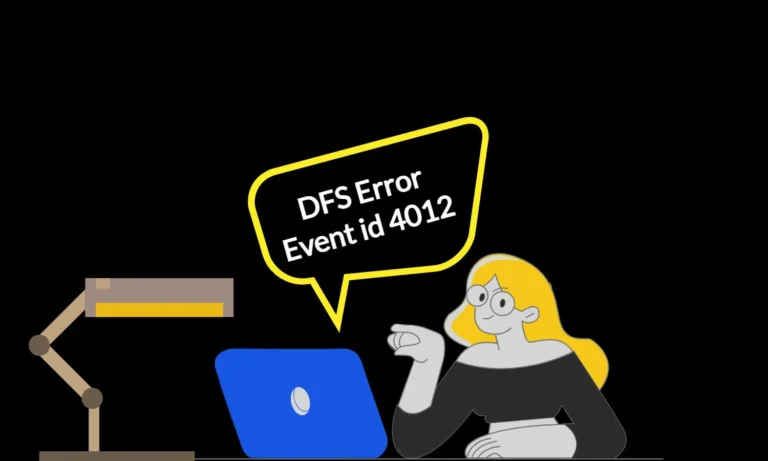
Kerberos Authentication Explained: How It Works and Secures Network
In a digital age where security breaches and cyber-attacks are increasingly common, the importance of robust security protocols cannot be overstated. Kerberos authentication stands as a fortress in the realm of network security, providing a proven and reliable method for securing user identities and network services.
This article dives deep into the workings of Kerberos, shedding light on its mechanisms, applications, and pivotal role in modern security architecture. If you’ve ever wondered how secure authentication is achieved or why Kerberos remains a cornerstone in the world of cybersecurity, this exploration will demystify its complexities and underscore its significance.
What is Kerberos and How Does It Work?
Kerberos, named after the mythological three-headed guardian of the underworld, is a computer network authentication protocol that provides a mechanism for mutual authentication between a user and a service over an insecure network. Developed in the 1980s at the Massachusetts Institute of Technology (MIT), Kerberos was conceived to ensure that a user’s credentials are never directly transmitted over the network, thereby safeguarding against eavesdropping and replay attacks.
The protocol utilizes secret-key cryptography to authenticate user identities securely to various network services, enabling users to access these services without repeatedly entering their passwords. Central to its operation is the use of “tickets” that serve as proof of identity, eliminating the need for direct password transmission.
The Components of Kerberos: A Deep Dive
At the heart of Kerberos lies a meticulously designed architecture, crafted to secure network authentication through a blend of encryption, ticketing, and centralized management.
This section embarks on an exploratory journey into the critical components of Kerberos, elucidating how each plays a pivotal role in safeguarding digital communications through user authentication and secure authentication service.
Kerberos KDC (Key Distribution Center)
The Key Distribution Center (KDC) is the linchpin of the Kerberos authentication system, a trusted third-party authority that issues tickets for secure communication between clients and services. It comprises two main components:
- Authentication Server (AS): The AS is the first point of contact for clients requesting access to network services. It validates the client’s credentials and issues a Ticket Granting Ticket (TGT), which is used to request service tickets from the Ticket Granting Server (TGS).
- Ticket Granting Server (TGS): Once a client possesses a TGT, it can request access to specific network services from the TGS. The TGS issues a service ticket, which the client then presents to the desired service for authentication.
This dual-component structure enables the separation of duties within the KDC, enhancing security by compartmentalizing the authentication process and the issuance of service tickets.
Tickets and Encryption
Tickets are the cornerstone of Kerberos’ mechanism for secure authentication. They serve as evidence of a user’s identity and permissions, encapsulated in a securely encrypted format. There are two primary types of tickets:
- Ticket Granting Ticket (TGT): Issued by the AS, the TGT is presented to the TGS to obtain service tickets. It contains the client’s identity and is encrypted with a secret key known only to the TGS, ensuring its authenticity and integrity.
- Service Ticket: Issued by the TGS, the service ticket allows the client to access specific network services. It is encrypted with a key known only to the TGS and the service, safeguarding the client’s credentials and session details.
Encryption is a vital aspect of Kerberos, ensuring that all communication between the client, KDC, and services remains confidential and tamper-proof. Kerberos typically employs symmetric key cryptography, where a single key is used for both encryption and decryption, facilitated by the KDC’s central role in managing these keys securely.
Understanding the Kerberos Authentication Protocol
This segment delves into the intricate ballet of the Kerberos authentication protocol, unravelling how it secures the authentication process through a choreographed exchange of credentials and cryptographic tickets.
By understanding the foundational principles and operational nuances of this protocol, we gain insights into its robust defence mechanism against unauthorized access, ensuring that only legitimate users can navigate the digital domain they are entitled to explore.
The Step-by-Step Kerberos Protocol Flow
- Authentication Request: The client sends a request to the AS to authenticate itself and requests a TGT.
- TGT Issuance: The AS validates the client’s credentials. Upon validation, it issues a TGT encrypted with a key known only to the TGS.
- Service Ticket Request: The client presents the TGT to the TGS and requests a service ticket for the application server.
- Service Ticket Issuance: The TGS decrypts the TGT, verifies the client’s authentication, and issues a service ticket encrypted with a key known only to the application server.
- Access Request: The client presents the service ticket to the application server.
- Service Access Granted: The application server decrypts the service ticket, verifies the client’s credentials, and grants access to the service.
Kerberos Tickets and Their Role
Kerberos tickets are central to the security and efficiency of the Kerberos authentication protocol. They act as secure credentials that are passed between the client, the KDC, and the application servers.
Each ticket contains information about the client’s identity, a session key, timestamps, and other details necessary for secure communication and authentication. These tickets ensure that sensitive information, like passwords, is never exposed over the network, significantly enhancing the security of the authentication process.
Kerberos and Active Directory: A Synergistic Relationship
Kerberos is not just a standalone protocol; it is also integral to the functionality of Active Directory (AD), Microsoft’s directory service for Windows domain networks. This symbiosis enhances both security and user experience in Windows environments.
Integration with Microsoft Windows
In Microsoft Windows environments, Active Directory leverages Kerberos as the default authentication protocol. This integration provides a seamless and secure authentication experience for users accessing network resources. Windows takes advantage of Kerberos’ ability to support Single Sign-On (SSO), allowing users to authenticate once and gain access to multiple services without re-entering credentials.
Benefits for System Administrators
The integration of Kerberos with Active Directory offers numerous benefits to system administrators, making it a preferred choice for managing network security:
- Streamlined Management: Administrators can manage user credentials and access permissions centrally through Active Directory, simplifying the authentication infrastructure.
- Enhanced Security: Kerberos enhances the security of Active Directory environments by ensuring that user passwords are never transmitted over the network, mitigating the risk of interception and unauthorized access.
- Scalability and Interoperability: The Kerberos protocol is designed to be scalable, handling large numbers of authentication requests efficiently. Additionally, its status as an open standard ensures interoperability with other systems and services.
- Audit and Compliance: Kerberos supports detailed logging of authentication events, aiding in audit trails and compliance monitoring by providing clear records of user access and authentication activities.
Through its deep integration with Active Directory and its comprehensive approach to security, Kerberos exemplifies how advanced authentication protocols can create a more secure, manageable, and user-friendly network environment.
A Comparative Analysis: Kerberos Vs Other Network Authentication Protocols
In the arena of network security, authentication protocols play a crucial role in safeguarding access to resources and data. Kerberos, with its robust ticketing and encryption mechanism, stands as a formidable protocol. However, it’s not alone in the landscape.
Let’s compare Kerberos with other prevalent authentication protocols: NTLM, LDAP, and RADIUS, to understand their differences, strengths, and use cases.
Kerberos vs NTLM (Windows New Technology LAN Manager)
- Security: Kerberos is generally considered more secure than NTLM. Kerberos uses stronger encryption techniques and mutual authentication, ensuring that both the client and server verify each other’s identities. NTLM, which predates Kerberos, relies on a challenge-response mechanism that is vulnerable to various attacks, such as replay attacks.
- Functionality: Kerberos provides a Single Sign-On (SSO) experience, allowing users to authenticate once and access multiple services without re-entering credentials. NTLM, due to its older design, lacks this capability and requires separate authentication for accessing different resources.
- Interoperability: Kerberos is designed to work in mixed and cross-platform environments, supporting integration with various operating systems and applications. NTLM is more limited to Windows environments, which can be a constraint in diverse network setups.
- Administration: Managing Kerberos requires a centralized Key Distribution Center (KDC), usually part of an Active Directory setup, making it somewhat more complex to administer than NTLM. However, this centralization also allows for better management and control over security policies.
Kerberos vs LDAP (Lightweight Directory Access Protocol)
- Purpose: Kerberos and LDAP serve different purposes; Kerberos is primarily an authentication protocol, while LDAP is a directory access protocol used for storing and retrieving directory information such as users, groups, and permissions.
- Integration: In practice, Kerberos and LDAP often work together, especially in Active Directory environments. LDAP stores the user credentials and directory information, whereas Kerberos handles the authentication part, using the information stored in LDAP.
- Security: While LDAP can encrypt the transmission of data using SSL/TLS, Kerberos provides a more comprehensive solution for securing the authentication process, ensuring that user credentials are not exposed during transmission.
Kerberos vs RADIUS (Remote Authentication Dial-In User Service)
- Scope: Kerberos is widely used in internal networks for authenticating access to network services. RADIUS, on the other hand, is often employed for external or remote access scenarios, such as VPN access, providing authentication, authorization, and accounting (AAA) services.
- Authentication Mechanism: Kerberos uses a ticket-based authentication mechanism, which provides a secure way for users to prove their identity without transmitting passwords. RADIUS uses a variety of authentication methods, including passwords, challenge-response, and tokens, making it versatile for different use cases.
- Use Case: Kerberos is ideal for environments where there is a need for strong mutual authentication and SSO capabilities within a closed network. RADIUS is better suited for situations requiring centralized authentication for remote users accessing the network from different locations.
Each of these protocols has its strengths and ideal use cases. Kerberos stands out for its security features and SSO capabilities, making it a strong choice for internal network authentication.
However, the choice of protocol ultimately depends on the specific requirements of the network environment, including the need for interoperability, the type of resources being accessed, and the level of security required.
The Strengths and Vulnerabilities of Kerberos
Kerberos, a stalwart in the realm of network authentication, is revered for its sophisticated approach to securing user credentials and service requests. It’s a protocol that has been honed over decades, embodying a delicate balance between accessibility and security.
However, like any formidable fortress, its defences are continually tested by those seeking entry. This exploration delves into the dual nature of Kerberos—its robust security features and the vulnerabilities that adversaries may attempt to exploit.
What Makes Kerberos Secure?
Kerberos is built on the foundation of symmetric key cryptography, coupled with a trusted third party—the Key Distribution Center (KDC)—to authenticate clients and services within a network. Here are some key features that contribute to its security:
- Mutual Authentication: Kerberos ensures that both the user and the service verify each other’s identities, minimizing the risk of impersonation attacks.
- Ticket-Based Authentication: Instead of transmitting passwords over the network, Kerberos uses tickets, which are encrypted data packets, thereby reducing the exposure of sensitive information.
- Limited Lifespan of Tickets: The tickets issued by Kerberos have a constrained validity period, which limits the timeframe for potential misuse by an attacker.
- Strong Encryption: Kerberos employs robust encryption algorithms to protect the confidentiality and integrity of the authentication data, making it challenging for attackers to decipher intercepted communications.
The Achilles Heel: Can Kerberos Be Hacked?
Despite its strengths, Kerberos is not impervious to cyber attacks. The protocol’s security is contingent on the secure operation of the KDC and the secrecy of its encryption keys. If these are compromised, the entire authentication framework could be at risk. Moreover, Kerberos relies on accurate timekeeping for ticket validity; thus, discrepancies in system clocks can potentially be exploited.
Common Attack Vectors: From Pass-the-Ticket to DC Shadow Attack
Several attack vectors target the vulnerabilities within Kerberos, each with its unique method of exploitation:
- Pass-the-Ticket Attack: This technique involves capturing a valid Kerberos ticket and using it to impersonate a user, gaining unauthorized access to network resources.
- Golden Ticket Attack: An attacker with access to the Key Distribution Center can create a “golden ticket,” granting them the ability to impersonate any user on the network.
- Silver Ticket Attack: Similar to the golden ticket, this attack creates a ticket for specific services, bypassing the need for validation from the KDC.
- DC Shadow Attack: This sophisticated attack involves creating a rogue domain controller to inject malicious data into the Active Directory, potentially compromising the entire network.
Additional Considerations and Defense Strategies
To safeguard against these vulnerabilities, it’s crucial to implement layered security measures and adhere to best practices, such as:
- Regularly Updating and Patching Systems: Keeping software and systems up to date can protect against known vulnerabilities that attackers could exploit.
- Monitoring and Auditing: Implementing comprehensive logging and monitoring strategies can help in detecting unusual activities that may indicate an attack in progress.
- Educating Users and Administrators: Awareness of potential security threats and knowledge of proper security practices are vital in preventing attacks.
- Securing the KDC: Protecting the KDC against unauthorized access is paramount, as it is the linchpin of the Kerberos authentication process.
Kerberos Unveiled: Your Top Questions Answered
What does “Kerberos pre-authentication failed” mean?
This error usually occurs when a user attempts to authenticate with a Kerberos server but the initial pre-authentication process fails. This can be due to several reasons such as incorrect user credentials, time discrepancies between the client and the server, or the user account being locked or disabled. It’s a mechanism to protect against unauthorized access attempts and ensure that the user requesting the ticket is indeed who they claim to be.
What is the Kerberos port number?
Kerberos typically uses UDP port 88 on the Key Distribution Center (KDC) server for communication. It’s essential to ensure this port is open and accessible over the network for Kerberos authentication to function properly.
Is Kerberos used for SSO?
Yes, Kerberos is widely used for Single Sign-On (SSO) purposes. It allows users to log in once and access multiple services without re-authenticating. Kerberos achieves this by providing ticket-based authentication tokens that prove the user’s identity to various services within a network.
Is Kerberos outdated?
Kerberos is not outdated. While it is one of the older authentication protocols, it continues to be updated and remains highly effective for certain environments, especially those that require strong mutual authentication and SSO within a closed network. However, modern cloud-based environments might use different or additional protocols that better suit their needs.
What are the disadvantages of Kerberos?
- Complex Setup: Setting up a Kerberos environment can be complex, requiring careful configuration and management of the Key Distribution Center (KDC).
- Dependency on Time: Kerberos requires synchronized time across all participating machines, as ticket validity is time-based.
- Single Point of Failure: The KDC represents a central point of failure. If it goes down, new authentications cannot be processed.
- Limited Expiry of Tickets: Tickets have a limited lifetime, which, while a security feature, can also be inconvenient in long-duration sessions.
What is Kerberos authentication in SQL Server?
Kerberos authentication in SQL Server is used to securely authenticate users connecting to the database without transmitting passwords over the network. It leverages the Kerberos protocol for mutual authentication between the client and the server, ensuring that SQL Server services can securely delegate credentials and perform actions on behalf of the user.
What is the primary goal of the Kerberos protocol?
The primary goal of the Kerberos protocol is to provide secure, mutual authentication between a client and a server over an insecure network. It aims to prevent eavesdropping and replay attacks, ensuring that communications and credentials remain confidential and unaltered.
What is the difference between Kerberos SSO and SAML SSO?
- Kerberos SSO is a network authentication protocol designed for use within a closed network. It uses ticket-based authentication to enable SSO, allowing users to access multiple services with a single set of credentials.
- SAML SSO (Security Assertion Markup Language) is an open standard for exchanging authentication and authorization data between parties, specifically, between an identity provider and a service provider. It’s more commonly used in web applications and cloud-based services, allowing for cross-domain SSO.
Kerberos is typically used in intranet environments where all users and services are within the same domain. In contrast, SAML is used across internet applications and services, offering more flexibility for web-based authentication across different domains
In Summation: The Last Word on Kerberos Authentication
In summation, Kerberos authentication stands as a pillar of network security, offering a sophisticated yet robust framework for managing user credentials and service requests securely. With its ticket-based system, strong encryption, and mutual authentication, Kerberos effectively shields against unauthorized access and ensures that digital identities are protected across various platforms.
While it comes with its complexities and vulnerabilities, understanding and implementing Kerberos correctly can significantly enhance an organization’s security posture. As we navigate through the evolving landscape of cybersecurity, Kerberos remains relevant, adapting to new challenges and continuing to provide a trusted solution for secure authentication.
Whether used in its traditional role within closed networks or integrated with modern cloud-based services, Kerberos’s legacy and utility are undeniable, making it an essential component of contemporary cybersecurity strategies.



